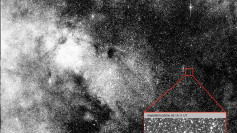With the first supercomputer to cross the exascale performance threshold, the United States has recovered the top rank on the list of the world's most powerful computers. The Oak Ridge National Laboratory's AMD-powered Frontier supercomputer surpassed 1.1 exaflops, or 1.1 quintillion calculations per second, on the Linmark benchmark, the lab said Monday.
The Frontier easily outperformed the previous record-holder Fugaku, which registered a peak computational performance of 442 petaflops last year - less than half the speed of the Frontier. For two years, the IBM-built Summit machine held the world's fastest supercomputer title before being surpassed by the Japanese-made Fugaku in June 2020.
"Frontier is ushering in a new era of exascale computing to solve the world's biggest scientific challenges," ORNL Director Thomas Zacharia said in a statement. "This milestone offers just a preview of Frontier's unmatched capability as a tool for scientific discovery."
The entire system is coupled to a storage subsystem with a capacity of 700 petabytes, a throughput of 75 TB/s, and a performance of 15 billion IOPS. The metadata tier is made up of 480 NVMe SSDs with a total capacity of 10PB, while the primary high-speed storage tier is made up of 5,400 NVMe SSDs with a total capacity of 11.5PB. Meanwhile, 679PB of capacity is provided by 47,700 PMR hard drives.
Supercomputers, massive devices that can take up entire floors of buildings and require as much electricity as a city, are used to simulate nuclear weapons blasts, global climate change effects, and the physics of the universe. They can also be good at medical research, such as drug discovery, which is important given the rapid spread of the new coronavirus and the COVID-19 pandemic it has produced.
While the United States leads the list of the world's fastest supercomputers, China continues to dominate with 173 systems. Meanwhile, the number of US systems on the list has decreased from 150 to 126.
Frontier is also the world's fastest AI system, with a mixed-precision performance of 6.88 ExaFlops in the HPL-AI benchmark. This translates to 68 million instructions per second for each of the brain's 86 billion neurones, demonstrating the brain's immense computational power. This system appears to be in competition with freshly announced AI-focused supercomputers powered by Nvidia's Arm-based Grace CPU Superchips for AI leadership.
Frontier also topped the Green500 list, which ranks the energy efficiency of supercomputers. Frontier had a power efficiency of 52.23 gigaflops per watt. Green500.org publishes the Green500 list twice or three times a year, beginning in 2007. It is usually published as a follow-up to Top500.org's Top 500 list of worldwide supercomputers.



